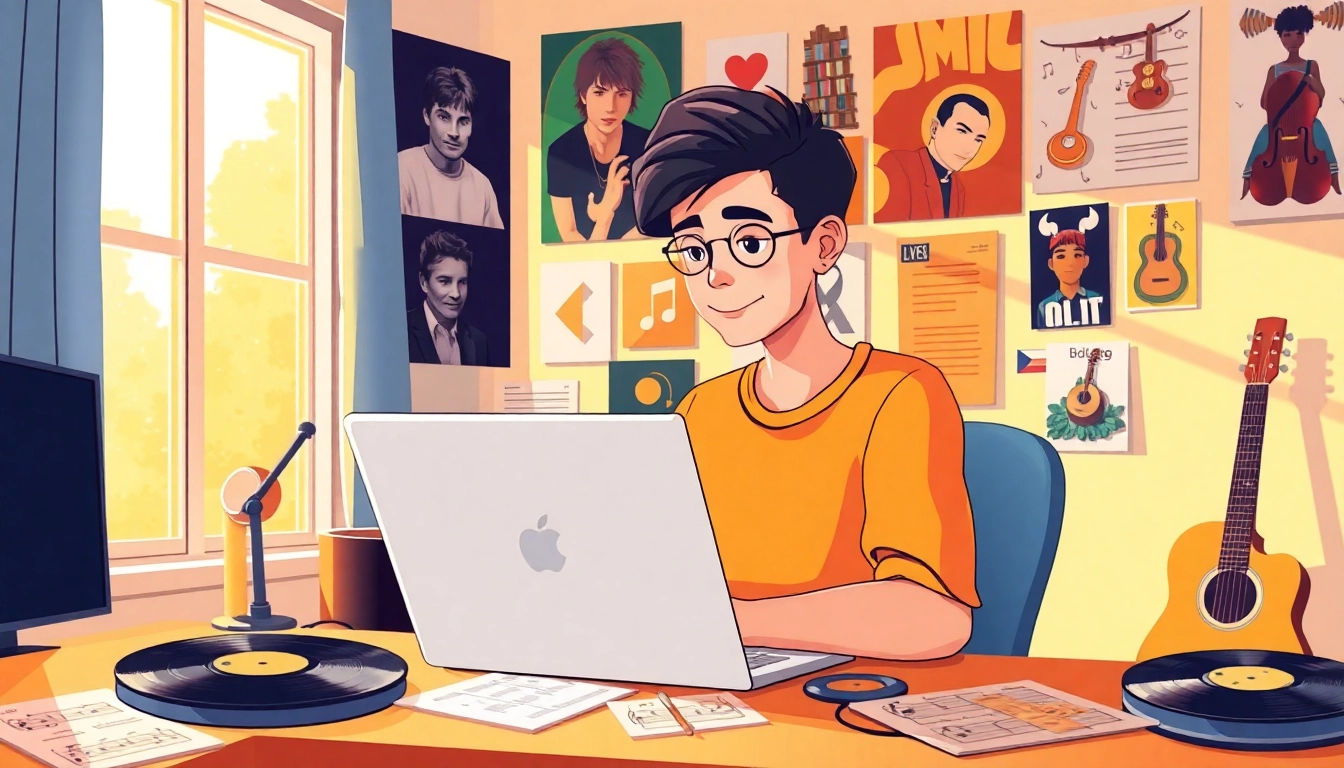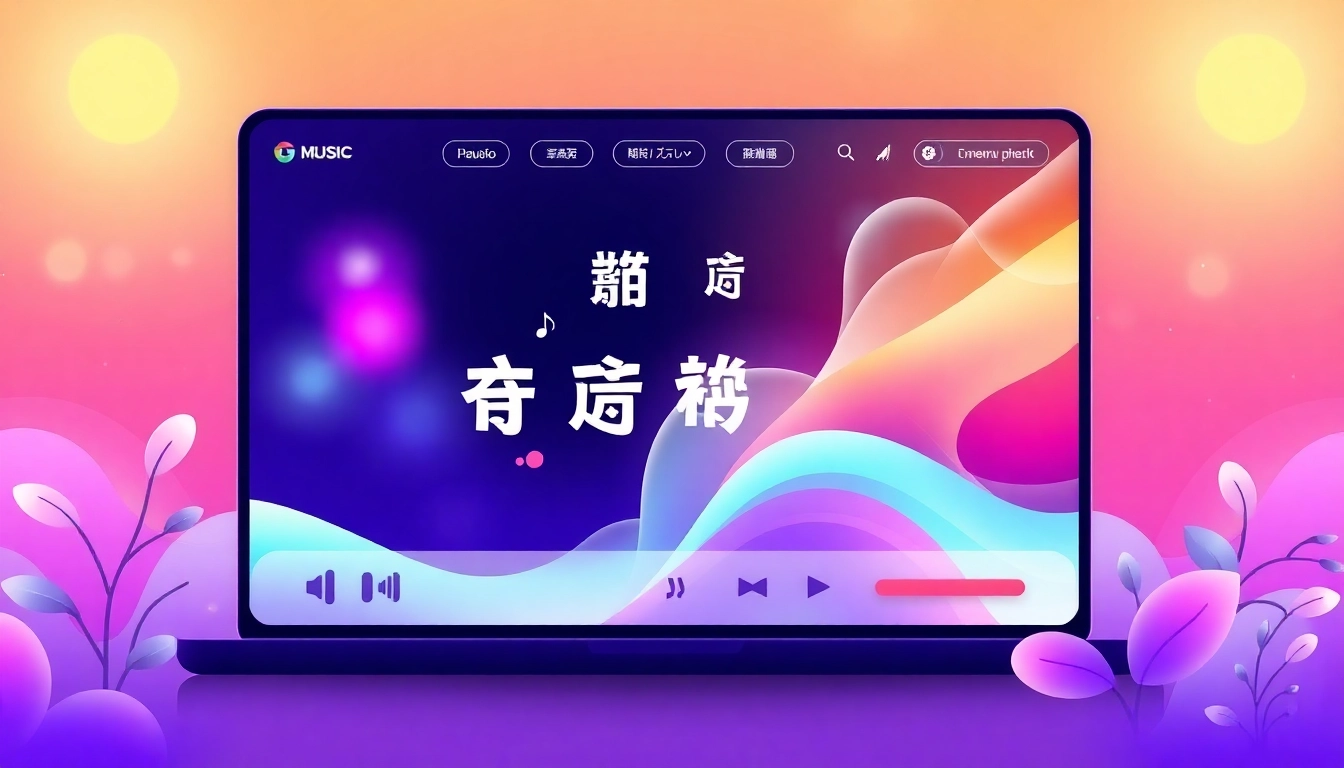
Understanding Music Pitching
What is Music Pitching?
Music pitching is the method of presenting your music to industry professionals, curators, and influencers for consideration, placement, or promotion. It involves not only sending your tracks to playlist editors and music blogs but also making personalized connections that can make a significant difference in how your music is received in a congested market. In essence, music pitching is akin to a sales pitch — it’s about getting your art noticed among thousands of submissions.
The Importance of Music Pitching for Artists
In today’s music landscape, saturated with talent and diverse sounds, effective music pitching is crucial. It’s the bridge that connects artists with their target audience, enabling them to reach listeners who might appreciate their work. Beyond mere exposure, successful pitching can lead to opportunities such as playlist placements, features in influential blogs, and collaborations with artists. These elements are pivotal for growth in an artist’s career, and understanding how to pitch effectively can lead to more passionate fan engagement and, ultimately, higher sales.
Common Misconceptions About Music Pitching
Many emerging artists perceive music pitching as an overwhelming task best left to industry insiders or managers. However, it’s essential to debunk the myth that pitching requires industry connections or experience. While these elements can certainly help, understanding how to craft a compelling pitch is a skill that can be learned and improved over time. Additionally, some might think that sending multiple unsolicited tracks to curators simultaneously is a viable strategy—this “shotgun” approach typically leads to poor results, as personalized and targeted pitches are invariably more effective.
Best Practices for Music Pitching
Crafting an Effective Pitch
The cornerstone of any successful music pitch is a clear, engaging message that encapsulates who you are as an artist and what makes your music special. Start by developing a captivating introduction about yourself and your music. It should capture the listener’s attention within the first few sentences. Include essential details such as your genre, what inspires you, any notable achievements, and why you believe your music would resonate with the target audience. Additionally, tailor each pitch to the individual curator or blog, integrating specifics about their preferences and previous features to demonstrate your research and genuine interest.
Timing Your Music Pitch Correctly
Timing is crucial in music pitching—both in terms of the time of day and when in the release cycle you send your pitches. For platforms like Spotify, it is recommended to submit your pitches at least 7 days before your release date. This gives curators ample time to listen to and consider your track for their playlists. Moreover, be aware of key dates in the music industry, such as major music festivals or award shows, when many curators may be too busy to respond or consider new submissions.
Utilizing Different Platforms for Music Pitching
With the proliferation of digital platforms, artists have a wide array of options for pitching their music. Websites like SubmitHub, Daily Playlists, and Amuse facilitate submissions to various curators and publications. Each platform has its unique interface and advantages; for instance, SubmitHub offers transparency through its feedback system, while Daily Playlists allows users to pitch to numerous playlist curators simultaneously. Choosing the right platform based on your specific needs and goals can enhance your chances of success.
Creating Compelling Music Pitches
Elements of a Winning Pitch
A successful music pitch often comprises several key elements, including a catchy subject line, an engaging introductory paragraph, supporting materials (like links to your music and a press kit), and a sincere closing statement. Make sure your subject line is concise yet captivating, as this is the first thing curators will see. Additionally, consider the quality of your supporting materials; high-resolution images, professional video clips, and a well-written press release can significantly boost your pitch’s impact.
How to Tell Your Story Through Your Pitch
Every artist has a unique story that can help them stand out. Use your pitch to narrate your personal and musical journey, explaining what led you to create your latest project. This narrative not only makes your pitch more relatable but also allows curators to connect on a deeper level with you as an artist. Elements like your influences, creative process, and any challenges you’ve faced enhance the emotional aspect of your music, making it more appealing to curators looking for meaningful content.
Visuals and Promotion in Your Music Pitch
While the music itself is paramount, visuals play a significant role in your pitch. High-quality images, album artwork, and promotional graphics can make your submission more appealing. Including promotional strategies in your pitch—for example, plans for social media outreach or a music video—is an excellent way to demonstrate that you are not only an artist but also a savvy marketer. Curators are more inclined to feature artists who show potential for proactive promotion, as this can aid in maximizing visibility and stream counts.
Engaging with Curators and Influencers
Researching the Right Curators for Your Music
Research is fundamental in the pitching process. Identify curators and influencers who align with your musical style and genre. Use platforms like Spotify, SoundCloud, and social media to find playlists or blogs that regularly feature artists similar to you. Compiling a list of potential contacts based on their previous work and engagement rates will streamline your pitching efforts, ensuring you focus on the right audience for your music.
Building Relationships with Influencers
Building genuine relationships with curators and influencers can dramatically impact your music pitching success. Start by engaging with them on social media—like, comment on, and share their posts to get on their radar. Sending personalized messages rather than generic pitches can make a significant difference in how your submissions are received. Moreover, networking with other artists in your genre can lead to joint pitch initiatives, expanding your reach and enhancing credibility through association.
Follow-ups and Maintaining Engagement
A well-timed follow-up can mean the difference between being overlooked and getting a response. If you don’t hear back within a week or two, it’s appropriate to send a polite follow-up email, reiterating your key points and expressing your enthusiasm. Consistently maintaining engagement with curators—without becoming a nuisance—can keep your music top-of-mind for future considerations. Share updates on your career, new releases, or meaningful news to foster and sustain these relationships.
Measuring the Success of Your Music Pitching
Key Metrics to Track in Music Pitching
Measuring the effectiveness of your music pitching efforts is essential for improvement. Track metrics such as the response rate from curators, the number of placements secured, and subsequent streaming numbers after a pitch is accepted. Analytics tools from platforms like Spotify for Artists and SoundCloud can provide insights into how your music is performing following pitching efforts, helping you assess what strategies are working and what needs adjustment.
Adapting Your Strategy Based on Feedback
Listening to feedback—whether it’s direct responses from curators or performance data—is critical to evolving your music pitching strategy. If you’re receiving constructive criticism on your submission materials, take it seriously and make necessary adjustments. Similarly, if certain types of pitches are yielding better results than others, consider focusing on those moving forward. Being flexible and open to change can significantly enhance your future pitching efforts.
Long-term Goals and Continuous Improvement
The world of music pitching is continually evolving. Set long-term goals for your pitching strategy—whether that means increasing placements by a certain percentage each quarter, diversifying the platforms you use, or aiming to build a specific network of curators. Regularly reassess your approach, celebrate small wins, and adjust your objectives based on trends and your own experiences. Continuous improvement is the hallmark of a successful artist in a rapidly changing industry.







